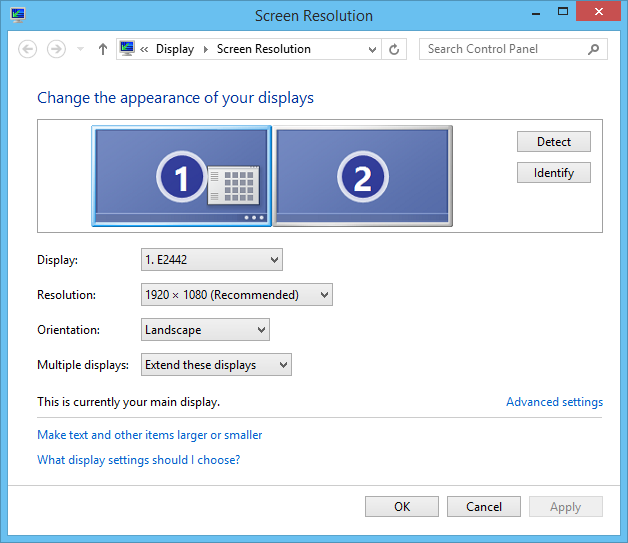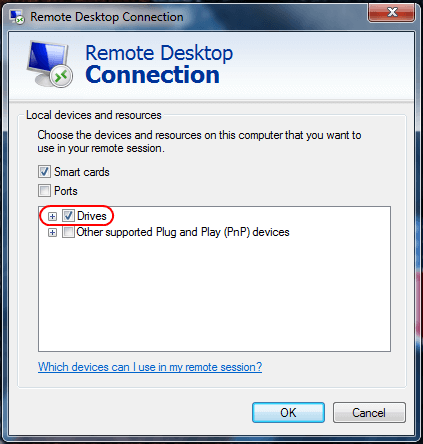

- #SERVER 2016 REMOTE DESKTOP ADJUST DESKTOP SIZE UPGRADE#
- #SERVER 2016 REMOTE DESKTOP ADJUST DESKTOP SIZE FULL#
- #SERVER 2016 REMOTE DESKTOP ADJUST DESKTOP SIZE WINDOWS#
Select and drag text from a document on one computer and drop it on the desktop of the other computer to create a clipping

Select and drag text and images from one computer to the otherĬopy a link from your web browser and paste it into a web browser on the remote computer

Using the shared Clipboard, you can:Ĭopy text and images from documents on one computer and paste them into documents on the other When you’re controlling a client computer, you can transfer data between the Clipboards of the administrator and client computers.
#SERVER 2016 REMOTE DESKTOP ADJUST DESKTOP SIZE FULL#
#SERVER 2016 REMOTE DESKTOP ADJUST DESKTOP SIZE WINDOWS#
These were the three basic methods to enable Remote Desktop connections in Windows Server 2016. To enable the rules in the Windows Firewall, follow the path below and set the policy Windows Firewall: Allow inbound Remote Desktop exceptions to Enabled.Ĭomputer Configuration \ Policies \ Administrative Templates \ Network \ Network Connections \ Windows Firewall \ Domain Profile To enable user authentication through Network Level Authentication (NLA), follow the path below and set the Require Network User Authentication policy to Enabled.Ĭomputer Configuration \ Policies \ Administrative Templates \ Remote Desktop Services \ Remote Desktop Session Host \ Security To enable Remote Desktop Connection, follow the path below and set the Allow users to connect remotely using Remote Desktop Services to Enabled.Ĭomputer Configuration \ Policies \ Administrative Templates \ Remote Desktop Services \ Remote Desktop Session Host \ Connections New-ItemProperty -Path 'HKLM:\System\CurrentControlSet\Control\Terminal Server\WinStations\RDP-Tcp\' -Name "UserAuthentication" -Value 1 -PropertyType dword -Force Enable Remote Desktop using Group Policy New-ItemProperty -Path 'HKLM:\System\CurrentControlSet\Control\Terminal Server\WinStations\RDP-Tcp\' -Name "UserAuthentication" -Value 1 -PropertyType dword -Force Commands should run in a PowerShell window with administrator privileges.īy running the following command, the Remote Desktop will be enabled, allowing connections via Terminal Services. To enable Remote Desktop through PowerShell, you will need to add two keys to the registry and a rule in the Windows Firewall.
#SERVER 2016 REMOTE DESKTOP ADJUST DESKTOP SIZE UPGRADE#
That’s it! Once you upgrade to Server Manager, you will see that the Remote Desktop setting has changed to Enabled. Once you’ve enabled the above setting, you’ll see a message to enable the corresponding Windows Firewall rule that will allow Remote Desktop Connection from any source address. At this point, you can choose whether to allow NLA connections by enabling the corresponding setting but also to select which additional users or groups to connect other than administrators. In the window that appears, enable the Allow remote connections to this computer setting. Here, click Disable in the Remote Desktop field. Open Server Manager and click Local Server from the left pane. Note: In Windows Server 2016 Essentials, Remote Desktop is enabled by default. So, you have to turn it on in order to access a Windows Server remotely.ĭepending on the case, we can enable the Remote Desktop directly using the graphical user interface, PowerShell or by implementing the appropriate policies through Group Policy. Remote management of Windows Server 2016 is enabled by default, but Remote Desktop, on the other hand, is disabled.


 0 kommentar(er)
0 kommentar(er)
